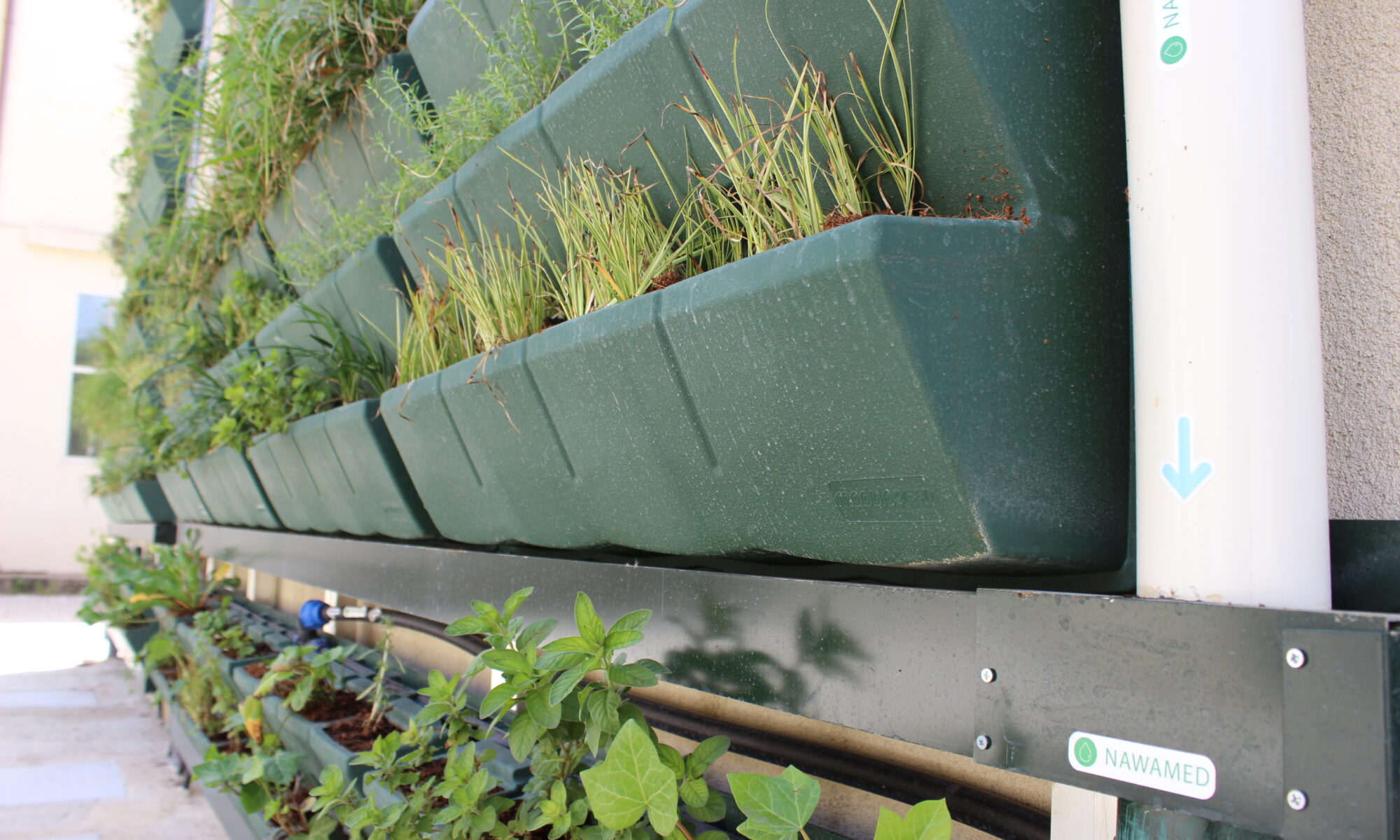The “green wall” in Ferla is an innovative system designed to collect, treat and reuse the greywater of the Istituto Comprensivo Statale Valle dell’Anapo in the Municipality of Ferla, in Sicily.
The system, built as part of the international project “Nature Based Solutions for Domestic Water Reuse in Mediterranean Countries” (Nawamed) was called Wall2Water (W2W).
Unlike the more common green facades that can be found in several cities today, the system treats the greywater from the school washbasins and makes it reusable for toilet flushing, thus reducing the consumption of high-quality drinking water.
Why is the Ferla system special?
In recent years, research and experiments have grown to allow the reuse of greywater, treating it with natural techniques, with solutions that use normally unused surfaces, such as walls and roofs, thus saving space on the ground. However, only a few cases have gone beyond the laboratory scale. Ferla’s Wall2Water is one of the first non-experimental, but real-scale installations: a new “green infrastructure” that offers multiple ecosystem services and aesthetic functions in urban areas by integrating a nature-based solution in a public building, in a place with a Mediterranean climate
How the treatment takes place
From a functional point of view, the system provides for the collection of water – mainly from the sinks – in a small tank from which it is pumped to feed the green wall. The water percolates inside the pots, where it undergoes a treatment process and, from here, is collected in a tank for subsequent reuse. The green wall is composed of modules hanging from the wall made up of pots whose filling material favours the development of bacterial biofilm, the main agent of the treatment processes. The plant species hosted by the pots favour bacterial biodiversity and allow the water to be distributed uniformly in the pots, guaranteeing an effective treatment and an aesthetic and refreshing function. Before being sent to the waste tanks for reuse, the treated water is disinfected with an ultraviolet lamp.
What are the system numbers?
The green wall covers an area of about 30 square meters, designed to maximize treatment capacity, facilitating maintenance by municipal technicians, thus reducing management costs. Approximately 1300 litres of water per day feed the system, producing treated water which is reused for flushing the toilets to replace precious drinking water. The estimate is about 1,000 litres of drinking water saved per year for each student (about 200).
The Istituto Comprensivo Statale Valle dell’Anapo is divided over two floors (upper floor about 120 students, ground floor about 70 students).
The bathrooms of interest are a single block and is specular between the ground floor and first floor and the external wall of this block from the north-west, although not very exposed to the sun during the day and not very visible from the entrance, is the easiest wall to be managed for a retrofitting intervention for the treatment and recovery of greywater.
What advantages does the system bring?
The reuse of the greywater in the toilet flushing tanks allows a saving of the drinking water supply equal to about 260 cubic meters per year, making it possible to cover about 25% of the water needs for the toilet tanks of the entire school.
Discharges into the public sewer are greatly reduced by the amount of greywater recovered, i.e. reducing the volume of water discharged into the sewer daily by about 10%.
11 professionals were involved in carrying out and implementing the activities; the green wall at the Ferla school will be monitored for more than a year to provide consistent data. Courses and technical visits will be organized to accompany professionals in replicating this experience.
read also “How the Green Wall works“

